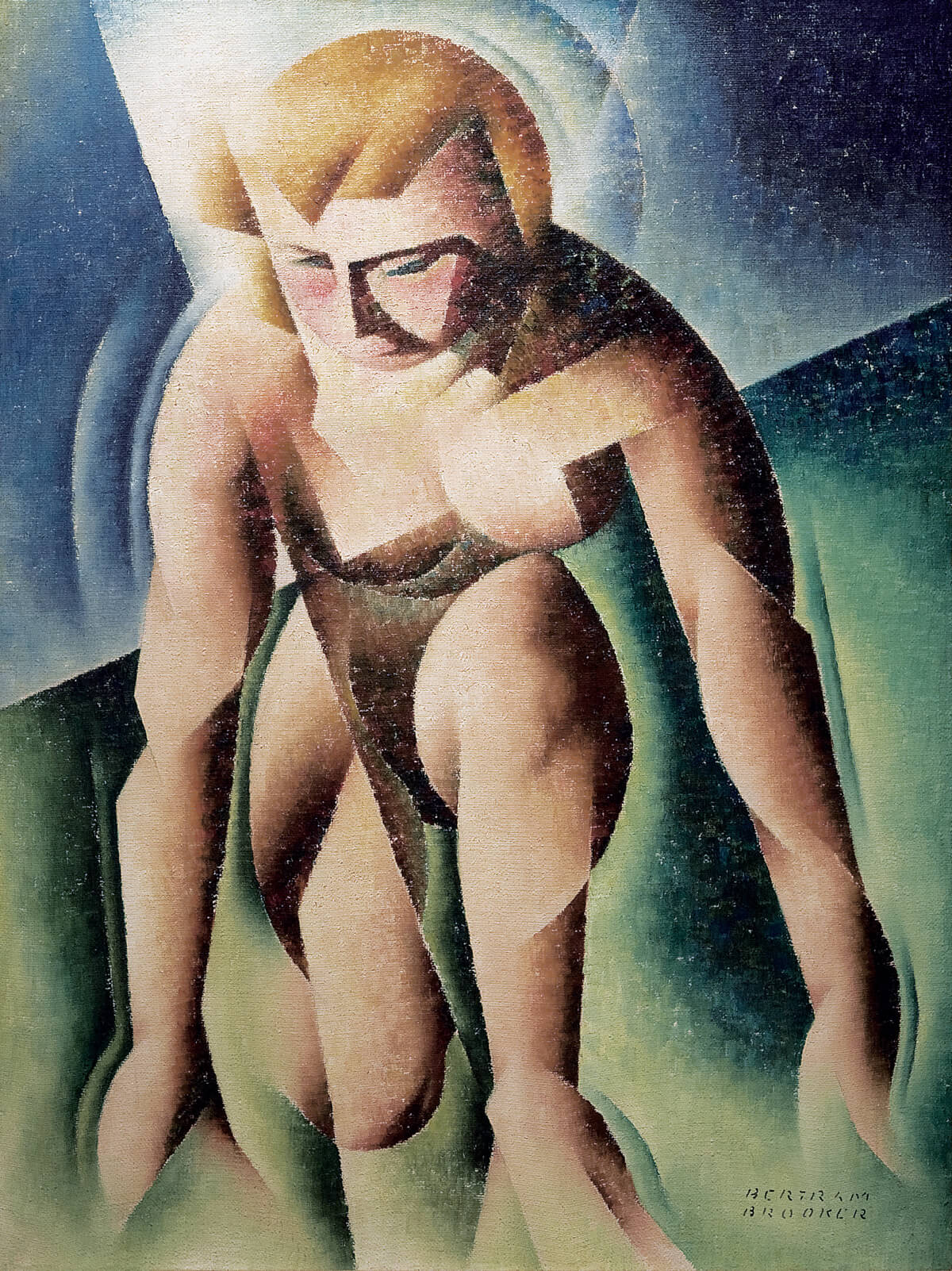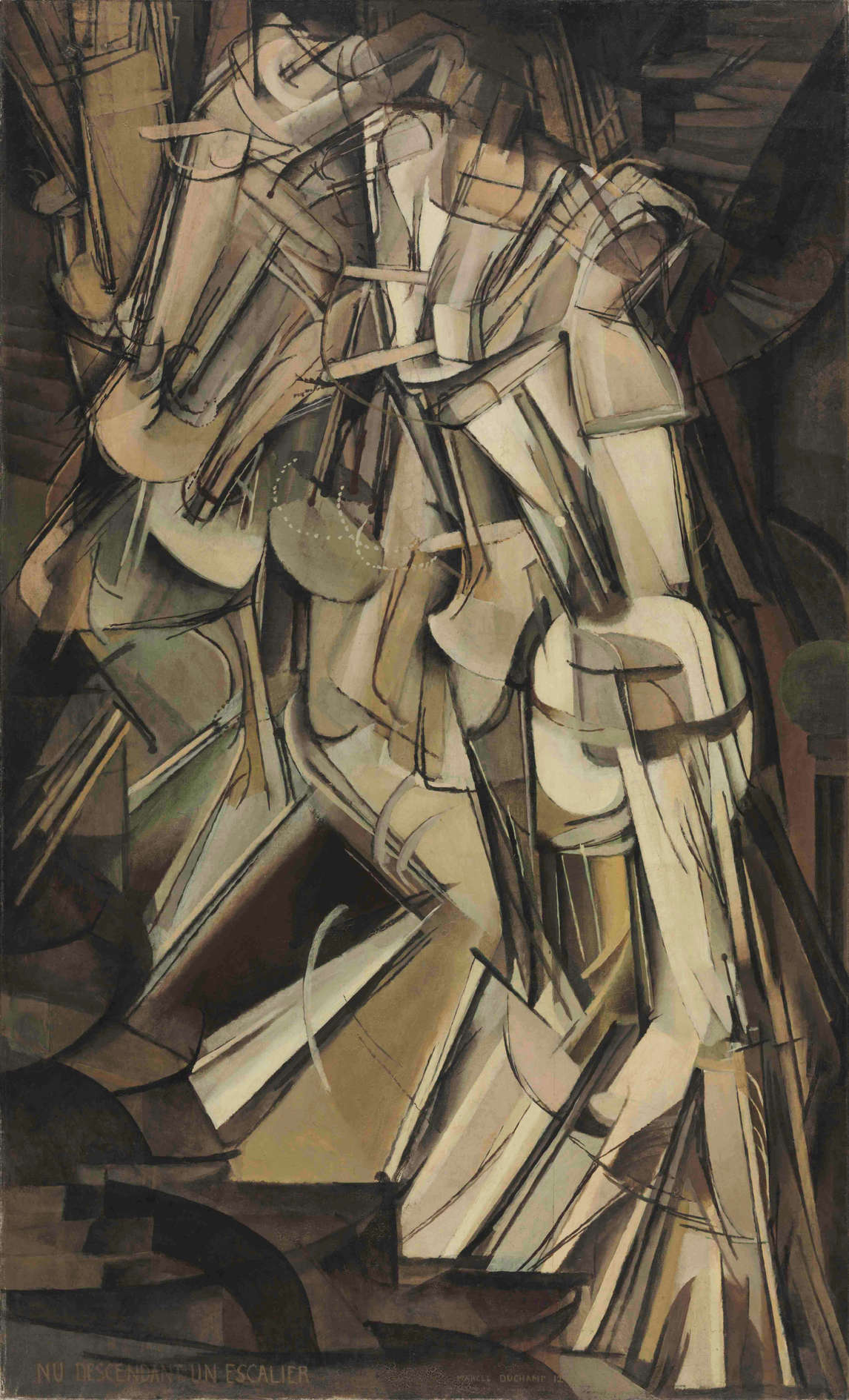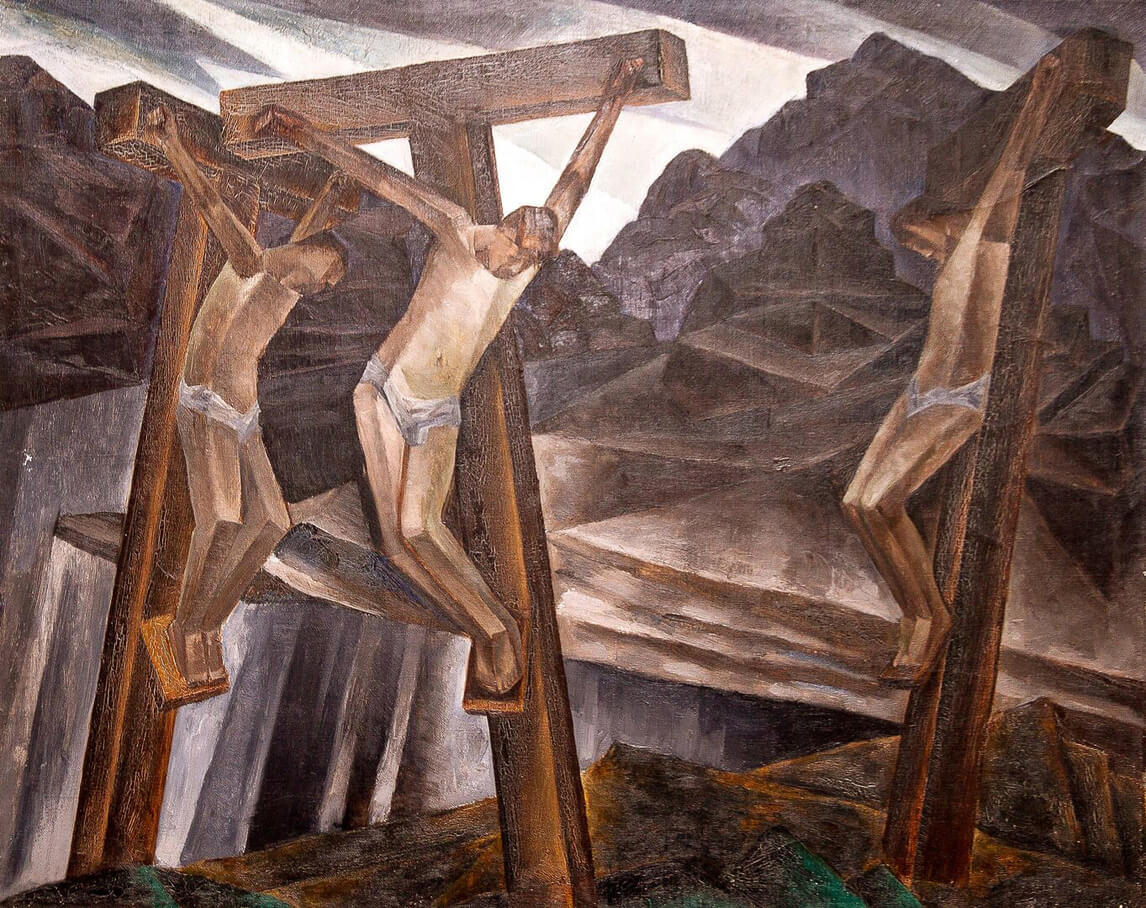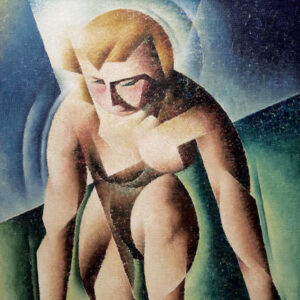Kneeling Figure 1940

Bertram Brooker, Kneeling Figure, 1940
Oil on canvas, 60.9 x 45.7 cm
Montreal Museum of Fine Arts
This painting successfully mixes representation and abstraction, as do many of Brooker’s later works. The female figure and a portion of the background behind her are segmented into quasi-abstract geometries. The figure is both an assemblage of shapes and a nude female in a crouching position. She inhabits two worlds simultaneously.


At first, the female figure seems to be positioned on a runner’s block, but the shapes from which she is constructed give the illusion that she is moving forward. Thus, she is represented in both present time (about to run) and future time: the present time is moving toward future time. The woman is rendered realistically (this is objective time) whereas the quasi-abstract shapes remind the viewer that time is really a subjective entity (which recalls the concept of “duration” by Henri Bergson [1859–1941]).
Brooker’s composition here resembles Marcel Duchamp’s Nude Descending a Staircase (No. 2), 1912, which caused a sensation at the 1913 Armory Show. Another earlier work by Brooker’s friend Kathleen Munn (1887–1974) may have influenced him in his rendering of Kneeling Figure, her Untitled (Crucifixion), c.1927–28. Like Brooker she combines representational elements with abstract shapes to demonstrate different concepts of how time can be seen and imagined.

 About the Author
About the Author
 More Online Art Books
More Online Art Books
 Acknowledgements
Acknowledgements